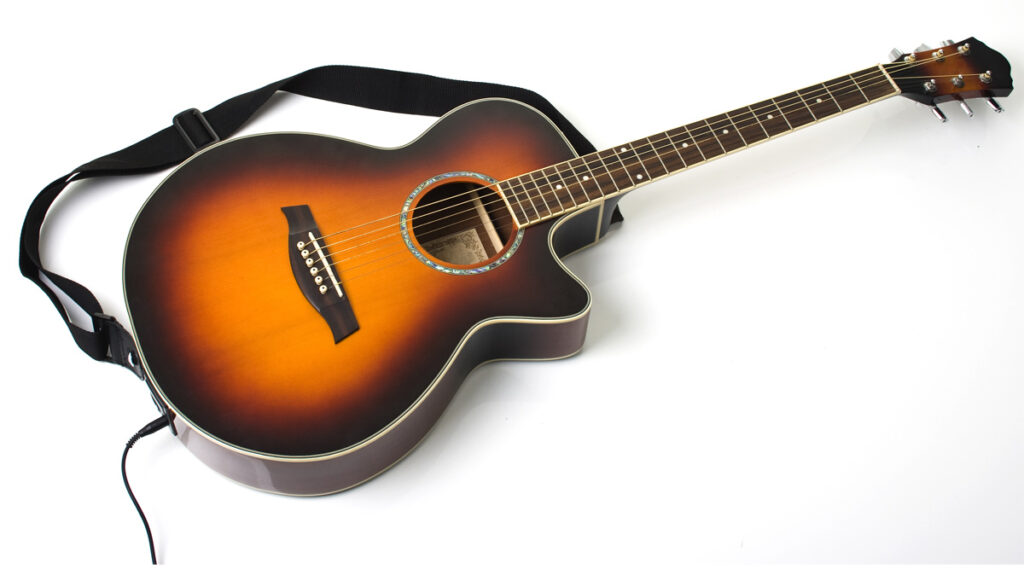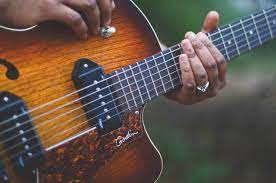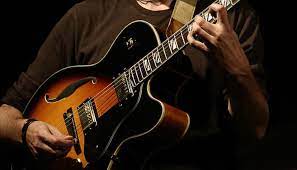What is an acoustic-electric guitar? There are many questions about the acoustic-electric guitar but fewer answers.
Answers about an acoustic-electric guitar are why we have decided to bring you this Post. The simple definition of an acoustic-electric guitar is a guitar designed to have a piezoelectric or magnetic pickup and a microphone.
The good thing about the acoustic-electric guitar is you can use it in different musical genres. They make use of the acoustic-electric guitar because it is used in a setup where volume is necessary, and this is why you can use it for live performances.
The design of an acoustic-electric guitar is very different from that of a semi-acoustic guitar, and we all know that the semi acoustic-electric guitar features sound chambers in its body. On the other hand, a standard acoustic-electric guitar is designed to come with piezoelectric pickups.
Having a piezoelectric pickup requires a pre-amplifier embedded in its body. Likewise, a pre-amplifier is incorporated in the guitar’s body for amplifying signals before it gets to the main guitar amplifier.
Interestingly, pre-amplifiers come with tone controls of different types and a tuner, and there is also an equalizer where you can use about six frequency bands.
Content Navigation
History Of The Acoustic-Electric Guitar

In the 1920s, Eddie Lang changed from using the acoustic-electric guitar as a primary solo instrument for live bands.
Drums and sections overshadowed the use of electric acoustic guitars when used during live bands, and this led to the search for amplification at all costs.
The twentieth century is when experiments regarding amplifying an instrument’s string vibrations electrically, and you could see designs from shows in the 1910s already.
During these shows, you could see that telephone transmitter adapters were positioned inside banjos and violin for the process of amplifying sound.
In 1920, hobbyists used carbon button microphones hooked to a bridge, but they detected vibrations at the bridge right at the top of these instruments. This resulted in the production of weak signals.
Llyod Loar was the first to create an acoustic guitar modern electric pickup, and Loar switched from Gibson in 1920 to form the Vivitone.
Loar’s time with Vivitone discovered an acoustic guitar’s early electric pickup. In addition, the guitar had a removable drawer in its bass rim section, where they found electronics. This resulted in the transfer of signals from a wooden bridge to a metal plate.
This metal plate was responsible for amplification and electric output, and Harry DeArmond’s pickup was the first commercial electric pickup available. So many people adopted this design quickly, and this was because it didn’t require any modification of any sort.
So far, we have discussed with you what an electric acoustic guitar is, alongside a brief history of the acoustic-electric guitar. There are other things we would like to show you about this guitar.
What Is An Acoustic-Electric Guitar?

An acoustic-electric guitar is very similar to a regular acoustic guitar. Still, the difference between the two instruments is that the electric acoustic guitar comes with preamp and pickup controls.
A regular acoustic guitar does not come with any of these controls, and anyone playing with the electric acoustic guitar is believed to have the edge over someone playing with the regular acoustic guitar.
Converting sounds into electronic signals for the preamp to amplify is what the pickup is designed to achieve on an electric acoustic guitar.
Also, you can amplify sounds thanks to the combination of the preamp and pickup, whether you are using a PA system, mixer, or amplifier. Finally, it allows recording acoustic directly while using an audio capturing device like an audio interface.
This is why so many users prefer the electric acoustic guitar for use during live performances because it offers the easy option of plugging in and playing.
Amplifying a regular acoustic guitar is different from doing it on an electric acoustic guitar. You can amplify signals by placing a microphone close to the soundhole of the PA system. However, this method offers little flexibility, and other questions are asked about both guitars.
Interesting Post to read: Is Piano Easier Than Guitar? Here’s Our Opinion
Can An Electric Acoustic Guitar Be Played Like A Regular Acoustic Guitar?
The simple answer to this question is yes, but there are confusing opinions everywhere about electric acoustic guitars being used at their best when it is plugged in.
However, this is not true, but the truth about the electric acoustic guitar and the regular acoustic guitar is that they sound similar whether you are using the soundhole or body chamber for amplification.
Furthermore, both instruments use the chamber for amplifying natural sounds, and the reason for this is that both instruments sound identical when they are plugged in.
Electronic pickup does not offer more when it comes to the flexibility of plugging inconveniently or adding outboard effects. There are drawbacks in tones produced by a plugged-in electric acoustic guitar.
When playing the electric acoustic guitar and you realize that the tone isn’t exactly what you want, positioning the microphone very close to the soundhole is the best way to boost signals and sounds. Utilizing the onboard pickup will not do much in this case.
Thanks to the external amp of the electric acoustic guitar, you can say that this type of guitar is way more versatile. This also provides you with the opportunity of expanding your sounds.
Finally, you can also use effect pedals like reverb, digital multi-effect pedal, and a chorus delay to modify tones produced by an electric acoustic guitar.
You can expand sound range massively when you use effect pedals. The use of effect pedals also opens you up to create personal and different tone touches, which provides you with the sound you desire.
Interesting Read
How To Record Electric Guitar With Audio Interface

